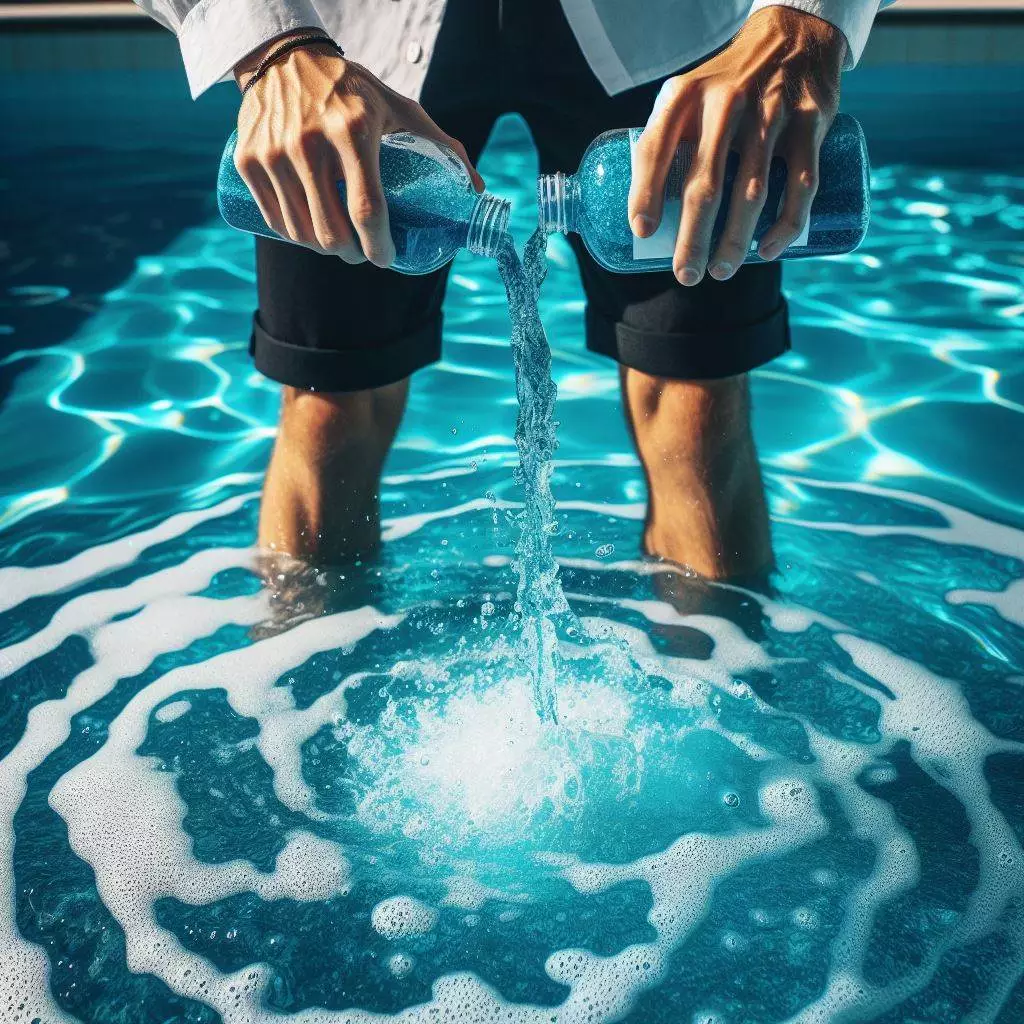Using flocculants in home swimming pool maintenance is a common practice aimed at improving water quality and making the pool water clearer. By understanding more about the standard packaging of flocculants on the market and how to dose these chemicals based on the size and frequency of use of the pool, pool owners can manage their pools more effectively.

Mechanism of Action of Flocculants
The main active ingredients in flocculants are usually aluminum salts (such as aluminum sulfate) or iron salts (such as ferric chloride), which attract and bind tiny particles in the water through chemical reactions. These tiny particles include algae, bacteria, dead skin cells, oils, and cosmetic residues, which usually make the pool water look cloudy. Flocculants gather these particles into larger clumps, making it easier for the filter to capture them, and they can also be removed by vacuuming the sediment, thus cleaning the dirt at the bottom of the pool.
Standard Packaging and Dosage on the Market
Flocculants are typically available in two forms on the market: powder and liquid. Powder flocculants are usually sold in packages ranging from 500 grams to 1 kilogram, while liquid flocculants may be available in 1-liter bottles or larger. The choice of these packages depends on the size of the pool and user preferences.
Dosage and Usage Time
The amount of flocculant used is usually based on the size of the pool. For example, for a home pool with a capacity of 10,000 liters (about 2640 US gallons), about 200-300 grams of powder flocculant or a corresponding proportion of liquid flocculant may be needed. These amounts can be adjusted according to the turbidity of the water.
The effects of using a flocculant are usually most noticeable within 24 to 48 hours, during which the water clarity significantly improves. After this period, water quality can be tested again to determine if more flocculant needs to be added. Under normal use and moderate pollution conditions, using a flocculant once a week is usually sufficient to maintain water quality.
Shelf Life of the Packaging
The shelf life of flocculants typically depends on the stability of their chemical components. Most flocculants have a recommended shelf life of 1 to 2 years from the date of manufacture. During this time, their chemical activity remains optimal for effective flocculation. Expired flocculants may lose some of their efficacy, requiring larger doses to achieve the same cleaning effect, which not only increases costs but may also put additional stress on pool equipment.
How to Store Flocculants
Proper storage conditions are key to ensuring flocculants maintain their best performance. Here are some best practices for storing flocculants:
- Keep Dry: Flocculants should be stored in a dry environment. Moisture can affect their chemical stability, especially powder flocculants, which are prone to moisture absorption and clumping. It is recommended to store them in sealed containers to avoid direct contact with moisture.
- Avoid High Temperatures and Direct Sunlight: Flocculants should be stored away from high temperatures and direct sunlight. High temperatures can accelerate chemical reactions, causing the product to fail prematurely; ultraviolet rays from the sun can also damage the chemical structure of the flocculants.
- Avoid Mixing with Other Chemicals: Flocculants should be kept away from strongly acidic or alkaline substances, as well as any volatile or oxidizing chemicals. The risk of chemical reactions not only could reduce the efficacy of the flocculants but also could lead to dangerous chemical reactions.
- Original Packaging Storage: If possible, keep the flocculants stored in their original packaging. The original packaging is designed to protect the contents, usually being well-sealed and moisture-proof.
- Labeling and Recording: Clearly mark the product name, opening date, and expiration date on the storage container of the flocculant. This helps track the storage time and shelf life, ensuring that expired products are not mistakenly used.


